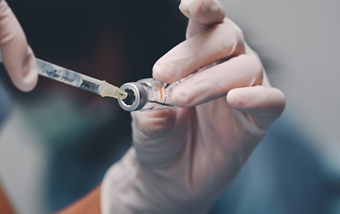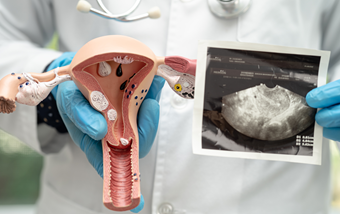Embryo grading is a crucial tool in IVF as it helps embryologists to assess the quality of an embryo. By distinguishing between good, average and poor-quality embryos, embryologists can select the best embryo for transfer to give the highest chance of achieving pregnancy. When grading an embryo, embryologists are referring to the appearance of the embryo. Therefore, embryos are only graded on what is visible under a microscope. Whilst embryo grading is not an exact science, it does help when determining which embryos may be suitable for transfer. There are numerous other genetic factors that determine if an embryo will become a viable pregnancy but these can only be deduced by genetic testing or by proceeding with an embryo transfer and seeing what happens.
What is embryo grading?
Before implantation, embryologists use a process called ‘embryo grading’ to evaluate the quality and viability of embryos. Viewing the embryo under a microscope, embryologists grade according to morphology and development, usually between days 3 and 5 of fertilisation. The aim is to identify the embryos with the best chance of implantation and growth into a viable pregnancy. The best quality embryo will ultimately be selected for transfer.
Understanding the embryo
The key features of an embryo that are considered during embryo grading include:
- Morphology: The appearance of the embryo.
- Compaction: This occurs when the cells start to communicate with each other and cell borders can no longer be defined. This stage usually occurs around late day 3 to day 4 of culture.
- Morula: After the embryo has done a few rounds of cell division, the cells will compact together to form a morula. This typically occurs around day 4 of development in preparation of blastocyst formation.
- Blastocyst: This is the stage of development usually observed on days 5 and 6 of culture. It’s characterized by the presence of an inner cell mass, trophectoderm and blastocoel cavity. Often referred as a “blast.”
- Inner Cell Mass: This is the little cluster of cells on the interior of the blastocyst that develop into the actual foetus.
- Trophectoderm: These are the cells that surround the outside of the blastocyst. They play a role in implantation and eventually become the placenta.
Attend one of our FREE Online IVF Event with Live Nurse Q&A and ask your questions about embryo grading.

The embryo grading process
Grading Day 3 Embryos:
Usually, on day three, embryos are in the ‘cleavage’ stage and comprise 6-10 cells. These embryos are evaluated by embryologists using a number of standards:
- Cell Number: Ideally, embryos should have 6-10 cells on day 3.
- Cell Uniformity: Uniform cells indicate healthy division, while varying sizes may suggest developmental issues.
- Fragmentation: Low fragmentation (less than 10%) is preferable, as high fragmentation can hinder embryo development.
Embryo Grading Chart: A Visual Guide to Quality:
An embryo grading chart is a visual aid used by embryologists to evaluate and categorise embryos systematically. The chart typically includes grades such as:
- Grade A (or 1): High-quality embryos with optimal cell number, low fragmentation, and good symmetry.
- Grade B (or 2): Embryos with minor imperfections but a good prognosis.
- Grade C (or 3): Embryos with more noticeable issues, such as higher fragmentation or asymmetry, but still potentially viable.
- Grade D (or 4): Poor-quality embryos with significant morphological abnormalities; these are less likely to result in a successful pregnancy.
Grading Day 5 Embryos (Blastocysts):
From day 3 to day 5, embryos grow to form a blastocyst which is made up of two distinct types of cell: foetal cells (also called the inner cell mass or ICM) and placental cells (also called trophectoderm or TE). The placental cells form the outer layer of the embryo, surrounding the fluid-filled cavity containing the foetal cells.
Blastocyst embryos that are graded after 5 days of growth are graded with a much more complicated system. Blastocyst grading is determined by:
- Degree of expansion based on how expanded the cavity is. This is graded on a scale of 1-6 with 6 being the most expanded.
- Appearance of the inner cell mass which is graded from A – D, with A being the highest quality and D being the poorest.
- Appearance of the trophectoderm, also graded from A – D.
Patients and embryologists can better comprehend the chances of successful implantation and development using these gradings. However, there are limitations to grading Day 3 embryos. For example, while the number of cells is relatively easy to count, the appearance of the cells and the degree of fragmentation are more subjective. Therefore, Day 3 embryo grading can only offer an indication of the embryo’s potential. It doesn’t guarantee that a good-looking Day 3 embryo will necessarily develop into a healthy blastocyst or implant successfully.
Blastocyst Grading Explained
When you receive a grade for your blastocyst (e.g.: 4AA or 3BC), you’ll notice three different elements; number, letter, letter, with each element referencing one of the below:
NUMBER
The degree of the expansion of the embryo’s cavity
1 = cavity less than half the volume of the embryo
2 = cavity more than half the volume of the embryo
3 = full blastocyst, cavity completely filling the embryo
4 = expanded blastocyst, cavity larger than the embryo with thinning of the shell
5 = hatching out of the shell
6 = fully hatched out of the shell
FIRST LETTER
The inner cell mass quality
A = many tightly packed, compacted cells
B = larger/loose cells, may appear fragmented
C = no cells visible
D = cells appear degenerate
SECOND LETTER
The trophectoderm quality
A = many smooth cells, equal size, forming a neat layer
B = few to moderate numbers of large but healthy cells
C = large or unevenly distributed cells
D = cells appear degenerate
In this method of grading, an embryo grade of 4AA, for example, would be a blastocyst of very good appearance. Any embryo graded 1 or 2 is called an early blastocyst and is too early to distinguish the foetal and placental cells clearly, therefore we do not give them additional lettering.
GRADING SYSTEMS:
Day 3 embryos are scored as follows:
Number of cells and grade (i.e. 8 cells grade 1)
GRADE 1 EMBRYOS: Very good quality. Maximum implantation capacity
GRADE 2 EMBRYOS: Good quality. High implantation capacity
GRADE 3 EMBRYOS: Medium quality. Low implantation capacity
GRADE 4 EMBRYOS: Bad quality. Very low implantation capacity
The number of cells should be between 6-10 on day 3 (optimal embryos have 8 cells)
Blastocysts are scored as follows:
Level of expansion of the blastocyst plus grade of the inner cell mass (baby-forming part) then grade of the trophectoderm (placenta-forming part). Grading scored as 5Bb for example.
| Expansion grading: | Inner Cell Mass Grading | Trophectoderm Grading |
| 1. Very Early Blastocyst | A. Tightly packed, many cells | a. Many cells forming a cohesive epithelium |
| 2. Early Blastocyst | B. Loosely grouped, several cells | b. Few cells forming a loose epithelium |
| 3. Expanding Blastocyst | C. Very few cells | c. Very few cells |
| 4. Expanded Blastocyst | D. Degenerate cells present | d. Degenerate cells present |
| 5. Hatching Blastocyst | ||
| 6. Hatched Blastocyst |
Notes:
It is not possible to differentiate between cell types with very early (score 1) and early (score 2) blastocysts.
Good grade blastocysts should score 3AA/3AB/3BA or higher on day 5.
Good and/or average blastocysts can be transferred & cryopreserved.
Blastocysts of a minimum grade 3CC on day 5 or 4CC on day 6 can be cryopreserved. Blastocysts of grade D are not suitable for cryopreservation.
Other day 5 Grades:
CM – Compacting Morula (pre-blastocyst)
M- Morula (pre-blastocyst)
Notes regarding embryo development:
Most embryos grow quite happily between days 1 and 3 of development and in fact the percent of embryos dividing after fertilization is 95%. This is because the egg contains food stores and all the components for development to day 3.
Post day 3, embryos start to have to make their own components and find their own food sources. For this reason, embryo development after day 3 is delicate and many embryos fail to develop to the blastocyst stage. This is true whether embryos are in the uterus or in the laboratory.
We expect the formation of blastocysts with respect to age to follow the below rates (Create data):
|
Age group |
Percentage of blastocyst formation |
|
<35 |
40-60% |
|
35-37 |
30-50% |
|
38-39 |
25-45% |
|
40-42 |
15-35% |
|
43-44 |
10-25% |
|
>45 |
10-15% |
The factors affecting embryo quality
Embryo quality is influenced by a mix of genetic, cellular, and environmental factors. Here’s a breakdown of the main things that can affect it:
- Maternal age: A woman’s egg quality declines with age, especially after 35.
- Chromosomal abnormalities: Older eggs are more likely to have genetic errors (aneuploidy).
- Sperm quality: Sperm with high DNA fragmentation can negatively affect embryo development.
- Underlying Health Conditions: PCOS, Endometriosis, Autoimmune diseases, diabetes, thyroid issues etc can impair gamete quality or embryo development.
- Lifestyle factors: Smoking, alcohol, and drugs all can reduce egg and sperm quality.
- Nutrition and BMI: Poor diet or obesity can harm egg and or sperm health and hormone balance.
- Lab conditions: Successful IVF requires optimal culture media, effective incubator conditions and expert handling techniques.
Embryo grading and IVF success rates
While medications are a standard component of the IVF process, the necessity and type of medications may vary based on individual circumstances. At your initial scan and consultation one of our fertility specialists at abc ivf will evaluate your specific needs and customise a treatment plan to best support your goals.
While embryo grading provides valuable and critical information, it is not an exact science. The appearance of an embryo does not always correlate perfectly with its genetic health or its ability to result in a successful pregnancy. It is important to note that even lower-graded embryos can sometimes result in successful pregnancies. However, higher-grade embryos usually mean better odds. Higher-grade embryos are more likely to implant successfully, develop into a healthy pregnancy and result in a live birth.
Additionally, grading does not guarantee pregnancy outcomes, as other factors such as uterine receptivity and genetic abnormalities can also influence success.
Comprehensive genetic testing (such as preimplantation genetic testing for aneuploidy, or PGT-A) can provide additional insights into an embryo’s viability.



